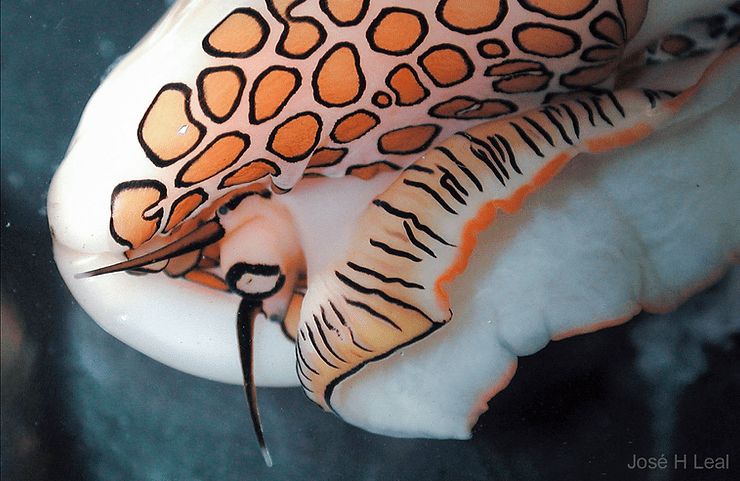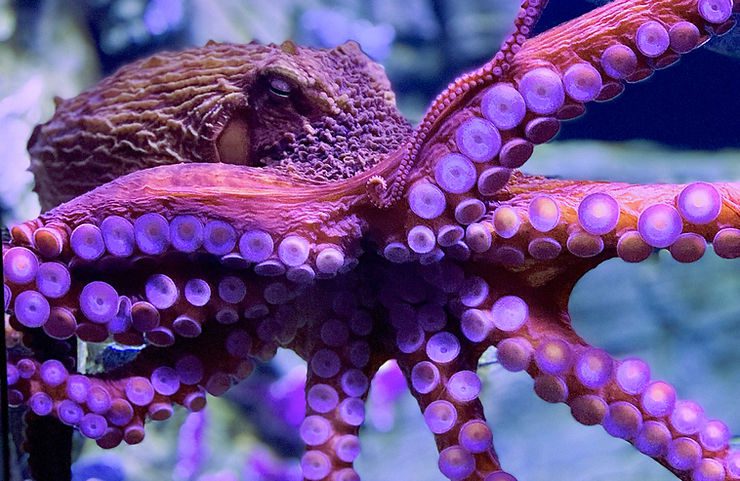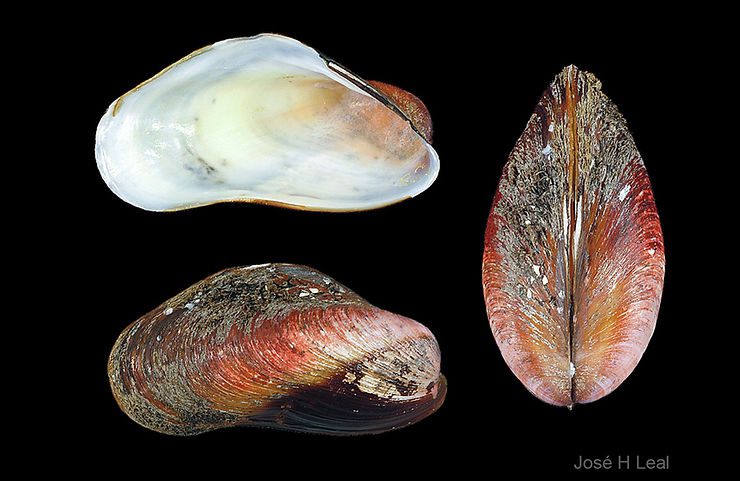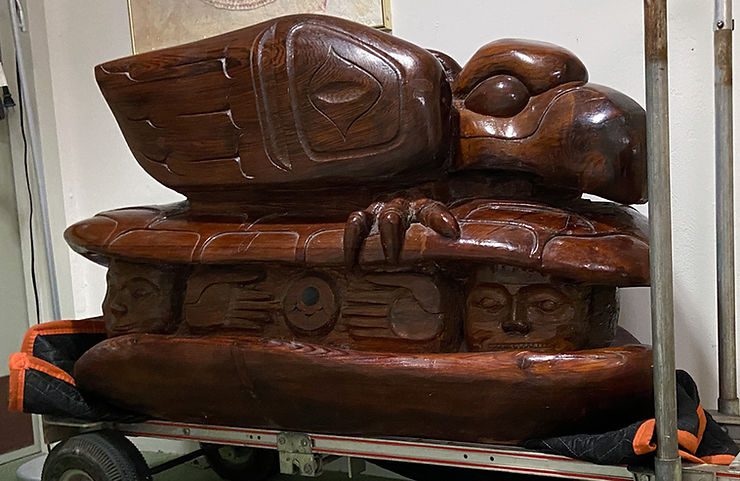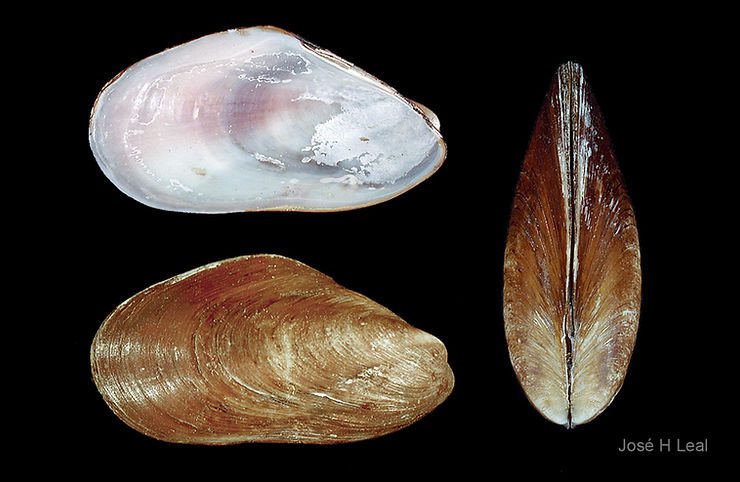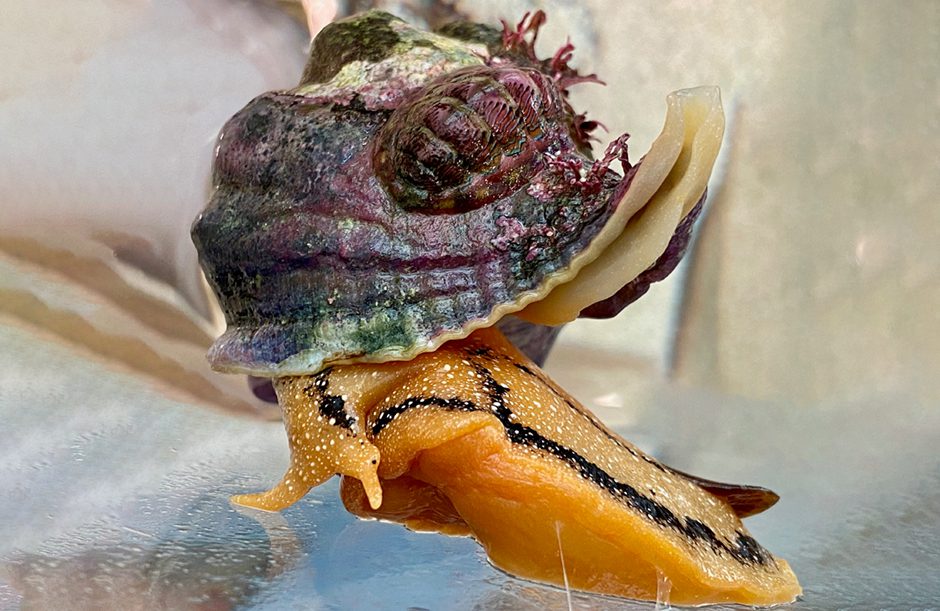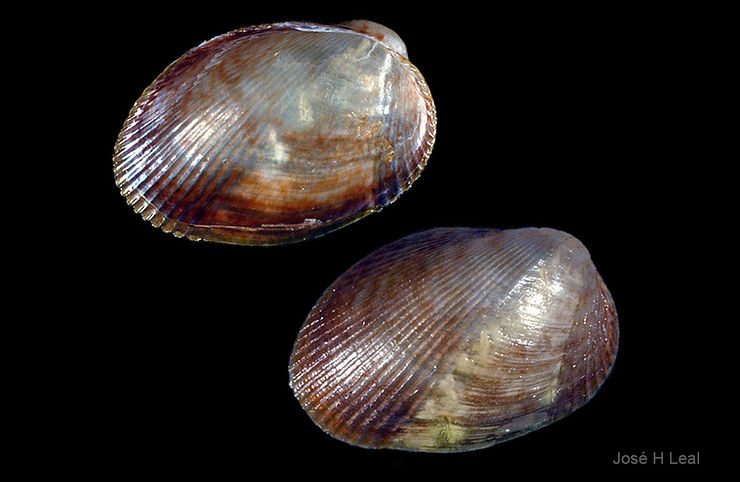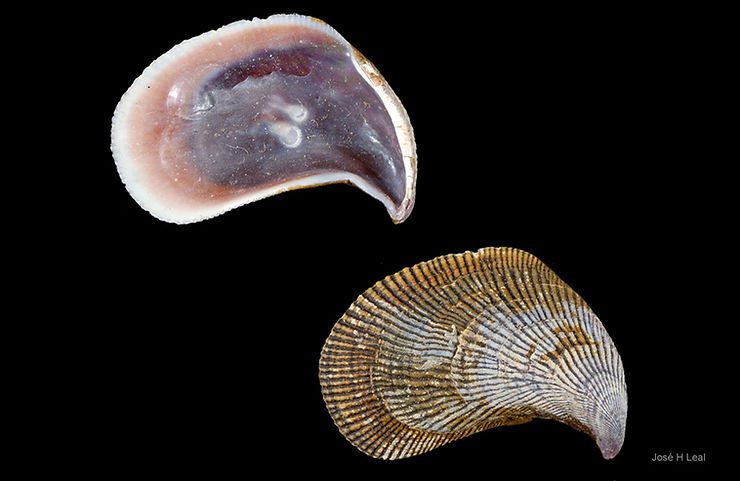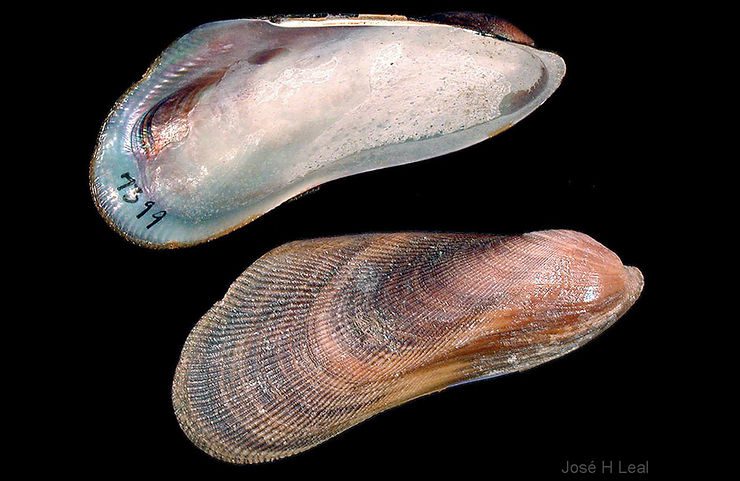
Shell of the Week: The Southern Ribbed Mussel
Geukensia granosissima (G.B. Sowerby III, 1914) grows to about 75 mm (about 3 inches). The shell has a straight dorsal (“upper”) margin, with the beak at the anterior one quart. The posterior end is broad and the ventral (“lower”) margin is curved inward. Relatively strong radial (departing from the beak) ribs are characteristic of this species. The periostracum is thin, light- to dark-brown.#geukensiagranosissima #southernribbedmussel #sanibel #periostracum
